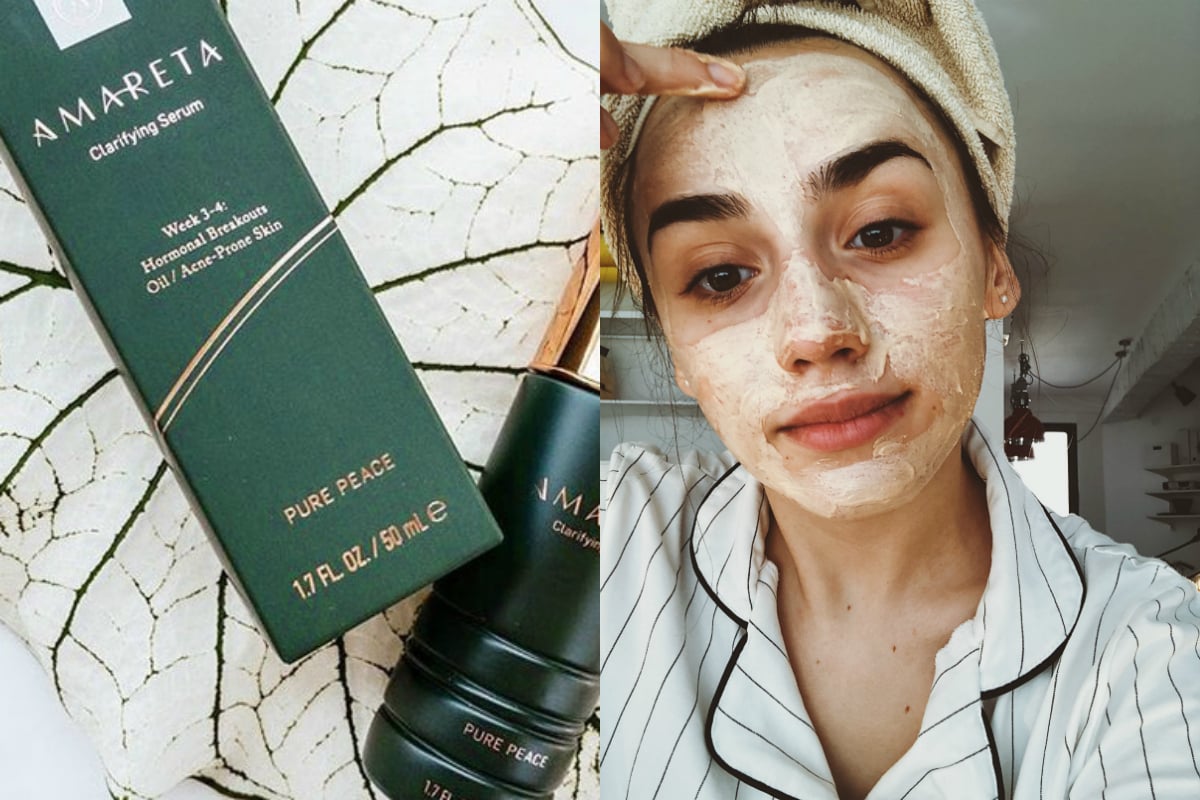
Did you know you now need period skincare?
We’re not talking vaginal moisturisers or anything to do with your bits down below. But according to a piece in The Guardian by Ellie Violet Bramley, there’s an opening in the beauty market for skincare products dedicated to managing the friendly skin issues that come with your menstrual cycle.
Although period skincare hasn’t reached Aussie shores (yet), US brands like Amreeta offer different cleansers, serums and skincare bundles based on whether you’re ovulating or bleeding. For a neat sum of around AU$150, plus shipping.
Is this cyclical approach to skincare the next big thing we should all be doing, or a load of crock?
Mamamia spoke to two dermatologists to find out.
Side note – before we get into it, check out this hilarious reenactment of what your period would be like if she was a person. Post continues after video.
How do your hormones (i.e. your period) affect your skin?
Let’s start with some facts.
Fact: the cycle of hormones travelling through women’s bodies can prompt changes in our skin. You’re probably most familiar with the stubborn family of pimples that pop up around your chin, jawline or hairline at roughly the same time every month. For some, it’s more of a colony of cystic acne than a family.






































































































